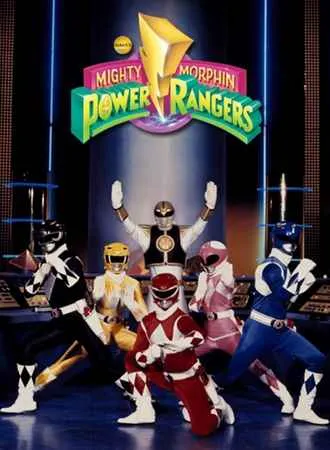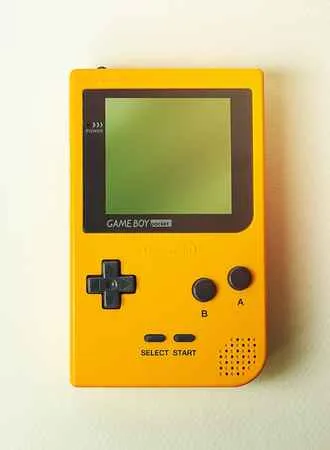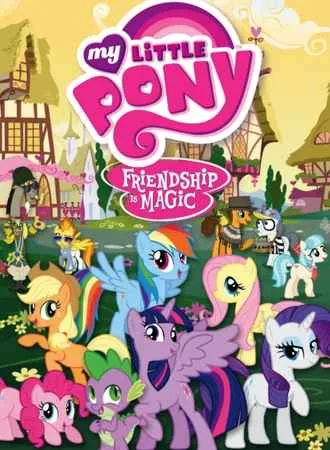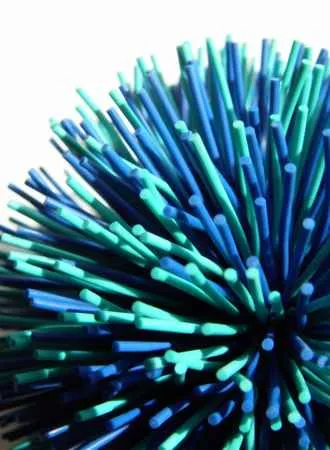Do you remember the toys you played with as a child? If you grew up in the 90s, you might recall a plethora of colorful, creative, and fun toys that helped you learn and explore the world around you. From building blocks to electronic games, the 90s offered a diverse range of educational toys that catered to various interests, ages, and skill levels.
In this blog post, we’ll take a trip down memory lane and revisit some of the best educational toys from the 90s. Whether you’re a parent, a teacher, or simply a nostalgic toy collector, you’ll enjoy exploring the highlights of this decade’s toy industry and discovering the timeless appeal of these classic toys. So grab a cup of coffee, sit back, and let’s go back to the 90s!
Key Takeaways on Educational 90s Toys
- Various educational toys popular in the 90s aimed at different ages and skill levels.
- Toys from popular entertainment properties of the 90s had a unique appeal to those who grew up with them. This includes action figures, board games, and plushies inspired by iconic movies, TV shows, and video games.
- Video games from home consoles offered an accessible and social experience compared to home computers at the time.
Toys from Popular Entertainment Properties
Toys from popular entertainment properties of the 90s hold a special place in the hearts of many who grew up during that time. From action figures to board games to plushies, these toys were often tied to iconic movies, TV shows, and video games that defined the decade.
Toy Story
The Toy Story franchise is undoubtedly one of the most popular and beloved film series of all time. It first burst onto the scene in 1995 with the release of the first film, which immediately captivated audiences with its groundbreaking computer-generated animation and heartwarming story about the secret lives of toys.
In the years that followed, the popularity of the Toy Story only continued to grow. The second and third installments in the series, released in 1999 and 2010 respectively, were just as successful as the first and cemented the franchise’s place in the pantheon of classic films.
One of the reasons for the franchise’s enduring popularity is the countless toys and merchandise that have been inspired by the films. From action figures to plush dolls to board games, there seems to be no end to the variety of Toy Story-themed products available.
Part of the appeal of these toys is that they allow children (and parents!) to bring the beloved characters from the films into their own homes and play out their own adventures. Whether it’s pretending to be Buzz Lightyear, Mrs Potato Head, Woody, or any of the other memorable characters from the franchise, kids can use their imaginations to create their own stories and explore the world of the film in their own way.
Another reason for the popularity of toys inspired by the film is that they tap into a sense of nostalgia for many adults who grew up with the franchise. For those who saw the first film as children, the toys and merchandise offer a chance to relive some of the magic of their childhood and share it with their own kids.

Teenage Mutant Ninja Turtles
The Teenage Mutant Ninja Turtles (TMNT) were a cultural phenomenon in the 1990s, with the franchise’s popularity reaching unprecedented levels. The TMNT were originally created as comic book characters in the 1980s by Kevin Eastman and Peter Laird, but they quickly became a mainstream sensation thanks to their animated television series and toy line.
The animated series debuted in 1987 and quickly became one of the most-watched children’s shows on television. The show’s mix of action, humor, and catchy theme song resonated with viewers of all ages and helped to turn the TMNT into household names. The popularity of the show led to the creation of a wide range of merchandise, including toys, clothing, video games, and more.
The TMNT toy line was particularly successful, with a seemingly endless array of action figures, playsets, vehicles, and accessories released throughout the 1990s. Children and collectors alike couldn’t get enough of the turtles and their friends and enemies, with new toys and variations hitting store shelves on a regular basis. The toys were well-made and featured lots of articulation and detail, making them popular with both kids who wanted to play with them and collectors who wanted to display them.
One of the most popular TMNT toy lines was the “Turtle Blimp” series, which featured a large inflatable blimp that could be used to transport the turtles and their gear. The blimp was a hit with kids, who loved being able to launch the turtles into battle from high above the action.
Other popular TMNT toys included the “Sewer Lair” playset, which recreated the turtles’ underground lair, and the “Pizza Thrower” vehicle, which fired plastic pizzas at the turtles’ enemies. There were also a variety of different versions of the turtles themselves, including ones with different costumes, weapons, and even different skin tones.
Power Rangers
The Power Rangers franchise is a cultural phenomenon that started in the early 1990s and has since become a global franchise with millions of fans worldwide. The popularity of the Power Rangers was fueled by a combination of factors, including its unique concept, vibrant costumes, action-packed storylines, and the sheer volume of merchandise it spawned.
The Power Rangers first appeared on television screens in 1993, and it quickly became a cultural phenomenon. The show followed a group of teenagers who transformed into superheroes known as the Power Rangers to battle evil forces and save the world. The show’s unique concept of combining Japanese footage with American actors, coupled with its flashy costumes and over-the-top action scenes, immediately captured the attention of young viewers.
The show’s popularity translated into a massive toy industry. The toys inspired by the TV show were everywhere in the 90s, with everything from action figures to board games, and even a Power Rangers-themed Monopoly set. The franchise also inspired a wide range of other merchandise, including clothing, lunch boxes, backpacks, school supplies, and countless other items.
The toy line was especially successful, with a seemingly endless array of different action figures, vehicles, and playsets based on the show’s various characters and storylines. The sheer volume of toys available helped to keep the franchise at the forefront of the minds of young fans, and it made collecting these toys a popular hobby for many kids in the 90s.
The Power Rangers franchise also extended beyond television and toys, with a series of movies released in the 90s and 2000s. The movies were generally well-received by fans and helped to further cement the franchise’s place in pop culture.

Games Consoles
Game consoles became popular in the 1990s due to their ease of use, affordability, and the increasing availability of high-quality games. They offered a more accessible and social gaming experience compared to home computers at the time. Additionally, advancements in technology allowed for more advanced graphics and sound, making the gaming experience more immersive and enjoyable.
Game Boy
The Game Boy Color was a handheld gaming device that was released in 1998 by Nintendo. It was the successor to the original Game Boy, which was released in 1989, and the Game Boy Pocket, which was released in 1996. The Game Boy Color was a significant upgrade from its predecessors, as it was the first Game Boy device to feature a color screen.
The Game Boy Color was incredibly popular in the US during the 1990s. It was a must-have device for kids and parents alike, and it quickly became one of the most popular gaming consoles of its time. The device was compact and portable, which made it easy to take on the go. It also had a long battery life, which was a major selling point for many consumers.
One of the main reasons for the Game Boy Color’s popularity was its library of games. Nintendo released many classic titles for the device, including “Pokémon Red and Blue,” “The Legend of Zelda: Oracle of Ages,” and “Super Mario Bros. Deluxe.” These games were not only incredibly fun to play but also offered hours of gameplay, which made the Game Boy Color an excellent value for the money.
Another reason for the Game Boy Color’s popularity was its affordability. The device was relatively cheap compared to other gaming consoles of its time, and it was a great option for families who couldn’t afford to buy a more expensive gaming device.

Sega Genesis
The Sega Genesis, also known as the Mega Drive in Japan, was a 16-bit home video game console released by Sega in 1988. While it had moderate success in Japan and Europe, it was in the United States where the Genesis became a cultural phenomenon, dominating the gaming market in the 1990s.
One of the primary reasons for the Genesis’ popularity in the US was its aggressive marketing campaign. Sega’s advertising campaigns featured a series of memorable slogans such as “Genesis does what Nintendon’t” and “Welcome to the Next Level.” These slogans, along with a number of edgy and catchy television commercials, helped to differentiate the Genesis from its main competitor, the Nintendo Entertainment System (NES).
In addition to its marketing campaign, the Genesis also had a number of factors that made it attractive to American consumers. The console had superior graphics and sound capabilities when compared to the NES, and it also had a number of arcade ports that were popular at the time, such as Sonic the Hedgehog and Mortal Kombat.
Sega also released a number of accessories for the Genesis, such as the Sega CD and the 32X, which helped to extend the life of the console and keep it relevant in the face of competition from newer consoles like the Sony PlayStation and the Nintendo 64.
By the mid-1990s, the Genesis had sold over 29 million units worldwide, with the majority of those sales coming from the United States. The console’s popularity in the US would eventually wane, however, as newer consoles with more advanced technology were released. Nonetheless, the Genesis remains a beloved cultural icon for many who grew up in the 1990s and remains an important part of video game history.
Tiger Electronics
In the 1990s, Tiger Electronics Handheld Games became incredibly popular, with millions of children and parents around the world enjoying the simple yet addictive gameplay of these handheld devices.
Tiger Electronics was founded in 1978 and originally manufactured low-cost electronics such as calculators and digital watches. In the late 1980s, the company shifted its focus to handheld electronic games, which quickly became its most popular product line.
Tiger Electronics Handheld Games were simple, pocket-sized devices that typically featured a single game or a small selection of games. They were designed to be easy to play and highly portable, making them the perfect way to pass the time on long car rides or during school breaks.
One of the most popular Tiger Electronics Handheld Games was the “Game & Watch” series, which included classic games such as Donkey Kong, Mario Bros., and The Legend of Zelda. These games featured simple black and white LCD screens, and the gameplay was often limited to moving characters around the screen and avoiding obstacles.
Other popular Tiger Electronics Handheld Games included sports games such as football and basketball, as well as puzzle games and action games. Some of the most iconic Tiger Electronics Handheld Games included the Street Fighter, Double Dragon, Sonic the Hedgehog, and Mortal Kombat.
Despite their simplicity, Tiger Electronics Handheld Games were incredibly popular in the 1990s, with millions of units sold worldwide. They were affordable, widely available, and easy to use, making them a favorite among kids and parents alike.
Today, many people still have fond memories of playing Tiger Electronics Handheld Games, and the devices remain highly collectible among retro gaming enthusiasts. While the technology may seem primitive by modern standards, these simple games captured the imagination of an entire generation and helped to pave the way for the modern video game industry.
Other Best Toys of the 90s
Mouse Trap
The Mouse Trap playset of the 90s was a popular board game designed for children. The game involved players constructing a Rube Goldberg-style mouse trap by assembling various contraptions and obstacles, ultimately leading to the capture of a toy mouse. The game was known for its colorful and intricate design, as well as its whimsical and entertaining gameplay.
Betty Spaghetty
Betty Spaghetty was a line of dolls created by the Ohio Art Company in the 90s. The dolls were notable for their bendable and interchangeable parts, allowing children to mix and match different hairstyles, outfits, and accessories.
The line was popular among young girls and was known for its creativity and versatility. The range included black dolls, which was most welcome as many toy ranges neglected to address diversity.
Cabbage Patch Kids
Cabbage Patch Kids were a line of dolls popular in the 90s that were originally created in the 80s. The dolls were known for their unique features such as their soft bodies and their unique adoption certificates. The Cabbage Patch Kids were a cultural phenomenon and were highly sought after by collectors and children alike.
Polly Pocket
Polly Pocket was a popular toy line in the 90s that featured miniature dolls and accessories in tiny, compact playsets. The toys were created by Bluebird Toys and were known for their portability and collectibility. The line became a cultural phenomenon, inspiring a TV series and several spin-off products.
Beanie Babies
Beanie Babies were a line of stuffed animals created by Ty Inc. which is owned by Ty Warner. Ty was previously employed by Dakin, where he spent most of his adult life as a salesperson.
The Beanie Baby is known for its cute and colorful designs, as well as its tag system that provided the toy with a unique name and birthday. Beanie Babies became a cultural phenomenon and were highly sought after by collectors, with some rare designs selling for large sums of money.
Crazy Bones
GoGo’s Crazy Bones were a popular collectible toy series from the 90s, featuring small, colorful figurines with unique designs and names. The toys were meant to be played as a game, with players flicking the bones to knock down other bones and earning points. The series gained a huge following among children and even spawned a video game adaptation.
Etch A Sketch
Etch A Sketch was a classic toy from the 60s that remained popular in the 90s, consisting of a red plastic frame with two knobs that controlled a stylus that drew on a magic screen. The toy required skill and patience to create intricate drawings, and shaking it would erase the screen. Etch A Sketch was a beloved childhood staple and is still produced today.
Dream Phone
Dream Phone was an electronic board game aimed at pre-teen girls that was popular in the 90s. The game featured a pink phone that players used to call different boys and gather clues about their secret admirer’s identity. The game was known for its cheesy voice acting and nostalgic 90s aesthetic.
Spice Girls Dolls
The Spice Girls dolls were a popular line of toys that were released in the late 1990s and early 2000s. Each doll was modeled after one of the Spice Girls, with their signature outfits and hairstyles. The dolls were highly sought after by fans of the group and collectors alike.
Doodle Bear
The Doodle Bear was a popular toy in the 90s that allowed children to draw and color on a stuffed animal. It came with washable markers that could be used to decorate the bear, and the markings could be washed off for a fresh canvas. The toy was a hit among kids who loved to express their creativity and personalize their stuffed animals.
Hungry Hungry Hippos
Hungry Hungry Hippos is a tabletop game that was popular in the 90s. The game involves players frantically pressing levers to make plastic hippos gobble up as many marbles as possible. The game’s simple and frantic gameplay made it a hit with children and families alike.
Silly Putty
Silly Putty was a popular toy in the 90s that was made of a silicone-based substance that could be stretched, bounced, and molded into different shapes. It was known for its unique properties of being both a solid and a liquid at the same time. Silly Putty was enjoyed by both children and adults and became a pop culture icon of the decade.
Pokemon Cards
The Pokemon Trading Cards of the 90s were a huge phenomenon, with millions of children collecting and trading them around the world. The cards featured colorful and detailed illustrations of different Pokemon characters, and each card had its own unique statistics and abilities.
Many people still hold onto their collections of these cards today as a nostalgic reminder of their childhood.
Yo-Yo
The yo-yo experienced a massive resurgence in popularity during the 1990s, with millions of children and adults alike picking up the toy as a hobby. Brands like Duncan and Yomega dominated the market with their innovative designs and marketing strategies, and yo-yo competitions became a popular event with large audiences.

Tickle Me Elmo
Tickle Me Elmo was a popular children’s toy in the 1990s that featured a plush Elmo doll (a character from the popular Sesame Street TV series) that giggled when tickled. The toy became a cultural phenomenon and was extremely difficult to find in stores during the holiday season. Its popularity even led to a parody sketch on Saturday Night Live.
Dear Diary
The Dear Diary toy was a popular electronic diary aimed at young girls in the 1990s. It allowed users to record their thoughts and feelings, and even came with a password feature for privacy. The toy also had a variety of fun features, like games and quizzes, that made it an all-in-one entertainment device. You can still by a modern version of the game today.
Sky Dancer
Sky Dancers were a line of flying fairy dolls released in the 1990s that quickly became a popular toy among young girls. The dolls were launched into the air with a pull-string launcher and spun gracefully before floating back down to the ground. While the toy was beloved by many children, it was also known for causing injuries due to its flying mechanism.
Poo-Chi Dog
Poo-Chi Dog was a popular electronic toy from the 90s that was designed to look like a robotic dog. It had various sensors and could interact with its environment, as well as respond to touch and sound. Poo-Chi Dog was used to find out if kids were ready for a real dog.
My Little Pony
My Little Pony toys of the 90s were a popular line of plastic figurines marketed to young girls. They featured brightly colored manes and tails, and often came with accessories such as combs and hair clips. Many of these toys have become collector’s items in recent years.

Mr Frosty
Mr Frosty was a popular toy in the 1990s that allowed children to make their own slushies and other frozen treats at home. The toy came with a plastic snowman-shaped ice grinder, flavorings, and accessories for decorating the treats. While it was a beloved toy for many children, it was criticized for being difficult to use and producing low-quality treats.
Magic Mitt
The Magic Mitt was a popular cleaning tool in the 90s that claimed to remove makeup with just water. It was made of a special microfiber material that was said to be gentle on the skin and effective in removing even waterproof makeup. Despite its popularity, the effectiveness of the Magic Mitt has been debated and there are now many similar products on the market.
Giga Pets
Giga Pets were a popular line of digital pets that were first introduced in the 1990s. They were small electronic devices that allowed users to care for and interact with virtual pets, which could be fed, played with, and even cleaned up after. Giga Pets were a precursor to modern-day virtual pet apps and were highly sought after by children and parents alike.
Brain Wrap
Brain Warp was a handheld electronic game that was popular in the 90s. The game featured a series of lights that players had to follow in a specific pattern to advance to the next level. It was a simple yet challenging game.
Stretch Armstrong
Stretch Armstrong was a popular toy in the 90s that could stretch up to four feet. The toy was made of a rubber-like material that could be stretched and twisted without breaking. The character also appeared in an animated TV show and comic book series.
Koosh Balls
Koosh Balls were an awesome toy in the 1990s, known for their unique texture and colorful design. They were made of rubber filaments that were bound together in the center, creating a tactile and squishy ball. Koosh Balls were often used for stress relief or as a fun and sensory toy for a kid.

Super Soaker
The Super Soaker was a popular water gun toy that was first introduced in the early 1990s. It revolutionized the water gun industry with its ability to shoot water further and with greater force than other water guns on the market. The Super Soaker was loved by kids and parents.





